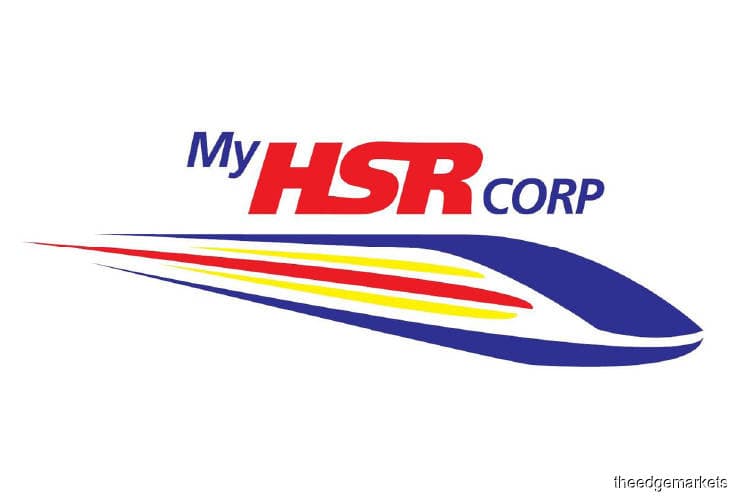
This article first appeared in The Edge Malaysia Weekly on May 18, 2020 - May 24, 2020
SOURCES from various industries say the KL-Singapore High Speed Rail (HSR) project, which was suspended in mid-2018, will be revived soon.
A political source indicates that talks with Singapore are likely to commence soon. However, he is guarded, adding that “nothing is concrete as yet”.
An engineering consultant tells The Edge that he heard about the revival of the multi-billion-ringgit project last week. “There has been talk, strong rumours, but we are not aware of the details. The consultants, I hear, have concluded their reports.”
Similarly, an executive of a construction company has heard of the project’s revival. “I heard it’s back on but don’t know the details.”
A fund manager with good ties with the government says that he had heard of the project’s revival and was scouting around for the main beneficiaries. “Am hearing that the Japanese may be involved, but that is conjecture,” he says.
It is worth noting that a source in Japan, who was previously employed here in Malaysia with the Japanese government, has heard of the involvement of the Japanese as well.
For the Malaysian portion of the HSR project, MyHSR Corp Sdn Bhd is the project delivery vehicle and implementer of the development. MyHSR Corp did not respond to questions from The Edge.
Last July, MyHSR Corp, which is wholly owned by the Minister of Finance Inc, appointed Minconsult Sdn Bhd as the technical advisory consultant and Ernst & Young Advisory Services Sdn Bhd as the commercial advisory consultant.
Talk of the HSR being revived comes as the end-May deadline approaches. The deadline was set in September 2018, when Singapore, at the behest of Malaysia, agreed to suspend the construction of the project.
The project, initially announced by the Barisan Nasional government in September 2010, was slated for completion in 2026. However, after Pakatan Harapan took power in 2018, its initial plan was to scrap the project.
But after considering that the abortive costs would exceed RM1 billion, the new government mooted a scaled-down version of the rail line. Malaysia forked out S$15 million (almost RM46 million) as a result of the deferment.
In July 2018, the entire cost of the HSR project, including hidden costs, was pegged at an estimated RM100 billion by former Economic Affairs Minister Datuk Mohamed Azmin Ali. The Barisan Nasional government had it pegged at RM72 billion. More recently, analysts have put the cost at RM30 billion to RM40 billion.
Last December, former prime minister Tun Mahathir Mohamad had said that the HSR project was back on track but was likely to be scaled down in terms of costs, and one of the plans was to reduce the speed of the trains. “The HSR will go ahead, but we will have to find out what speed (of the train) we should have. It is not necessary for it to run 400km per hour … Maybe less speed will contribute to the reduction of cost,” he was reported as saying at the launch of the Bandar Malaysia project. Bandar Malaysia is the KL end of the KL-Singapore HSR.
Meanwhile, at MyHSR Corp, it is understood that its CEO Datuk Mohd Nur Ismal Mohamed Kamal has left. Sources say commercial director Tonny Yap is leading it now, but this was conjecture at press time.
Work on the HSR project was initially slated to start in late 2018, after the selection of project delivery partners in April of the same year. An open tender had been called in November 2017. The initial plan was for the eight stations — Bandar Malaysia, Sepang-Putrajaya, Seremban, Melaka, Muar, Batu Pahat and Iskandar Puteri in Malaysia, and the Jurong East station in Singapore — to commence operations by end-December 2026.
Malaysian Resources Corp Bhd and Gamuda Bhd, in a 50:50 joint venture, had accepted a letter of appointment from MyHSR Corp as project delivery partner for the 135km northern section running from Bandar Malaysia station to Melaka station. The Syarikat Pembenaan Yeoh Tiong Lay Sdn Bhd-TH Properties Sdn Bhd consortium was earmarked to construct the 200km southern portion.
More than 60 civil works packages were expected to be doled out, resulting in more than 5,000 sub-contract packages.
There was also a two-horse race between the Chinese and Japanese — with South Koreans and Europeans also in the running albeit on the sidelines — to play a key role in the construction and provision of rolling stock and expertise.
Last week, Senior Minister and Minister of International Trade and Industry Mohamed Azmin said the government would announce a six-month short-term recovery plan at the end of the month, after which a medium-term revitalisation plan under Budget 2021 would be tabled in November, followed by a long-term reform plan (the 12th Malaysia Plan) in January next year.
Much of these plans stem from the adverse impact of the Covid-19 pandemic and the ensuing partial lockdown that has crippled the economy and brought industries to a standstill.
Whether the KL-Singapore HSR is part of these plans remains to be seen.
Save by subscribing to us for your print and/or digital copy.
P/S: The Edge is also available on Apple's AppStore and Androids' Google Play.